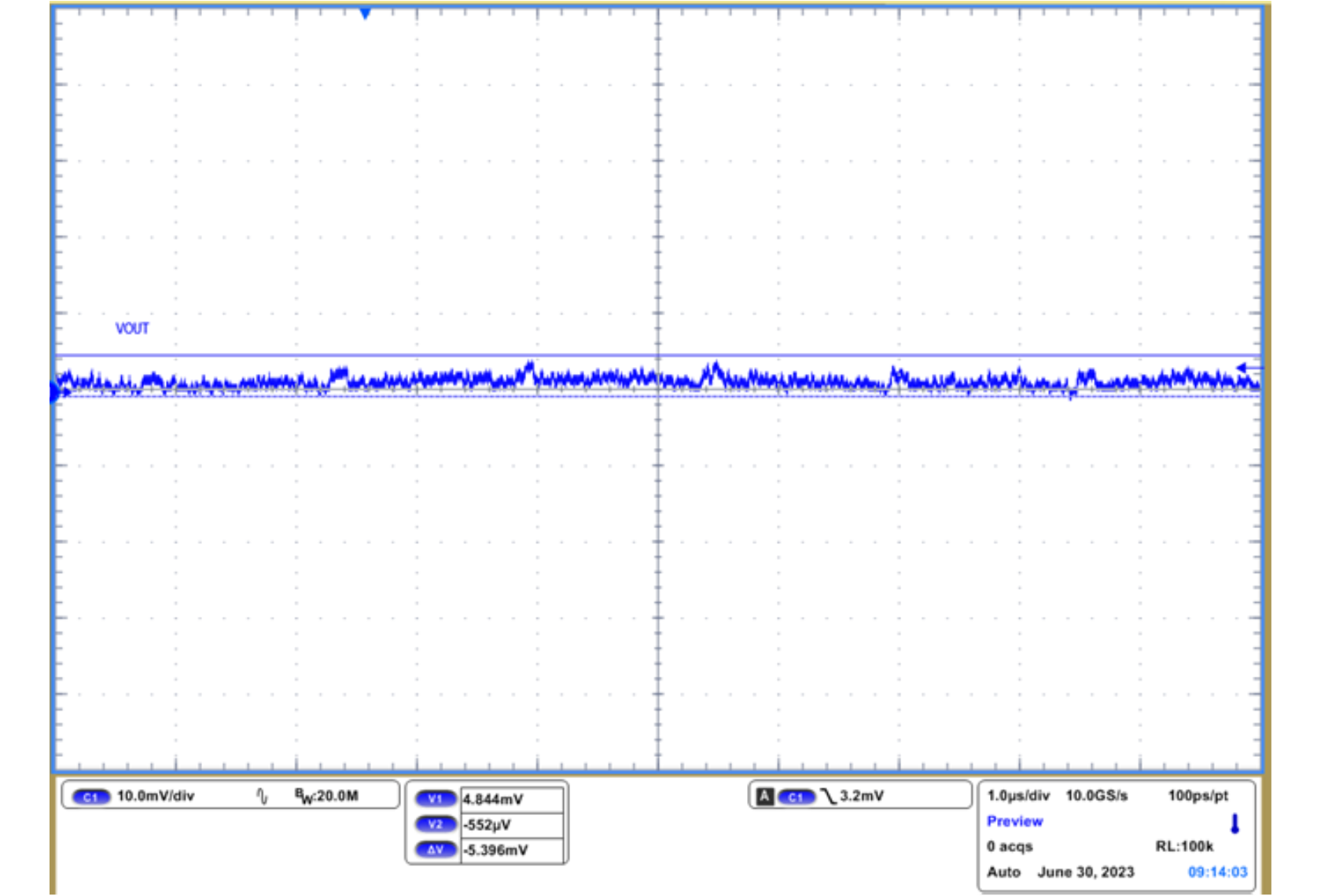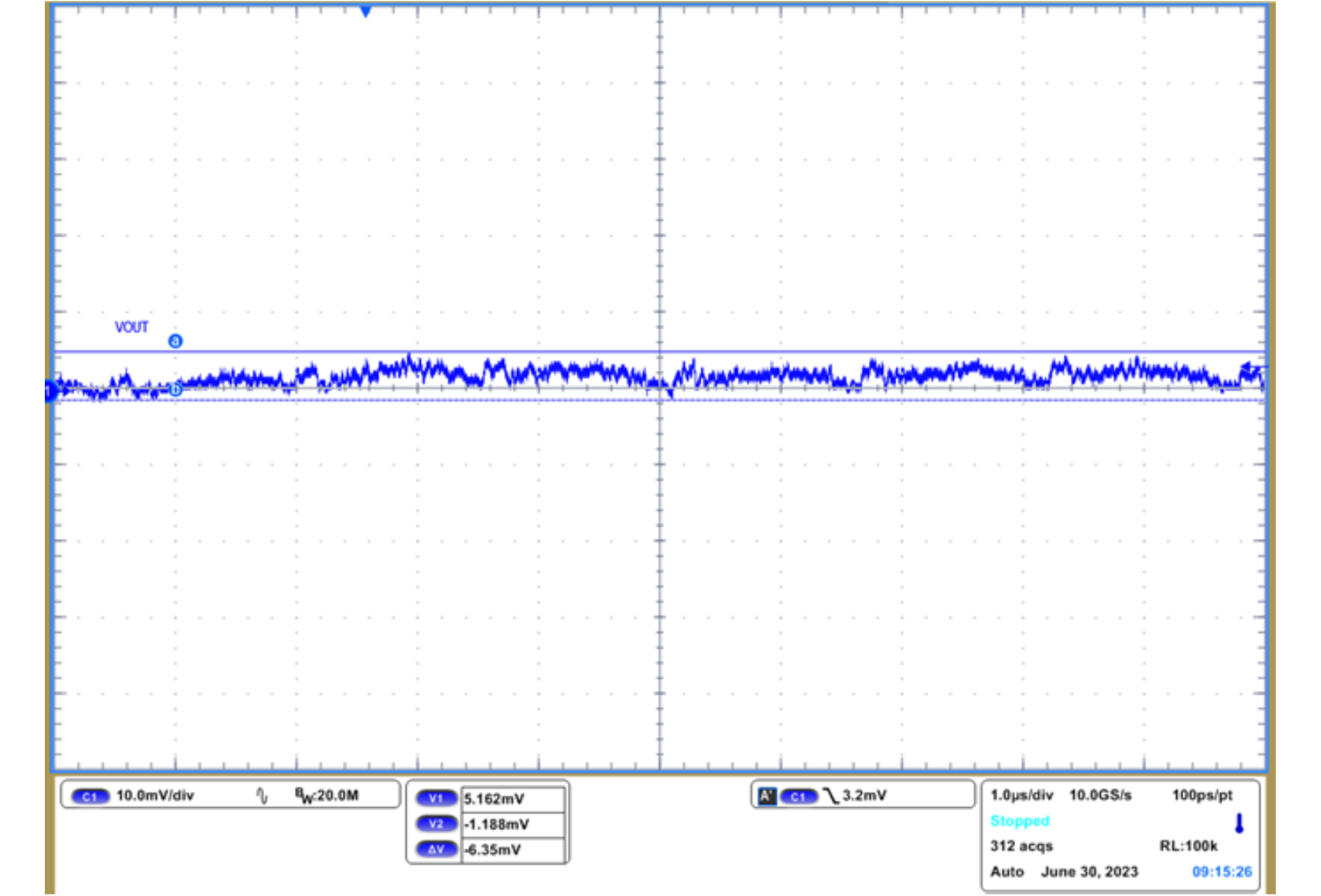SLUUCU3 November 2023
- 1
- Description
- Get Started
- Features
- Applications
- 6
- 1Evaluation Module Overview
- 2Hardware
- 3Software
- 4Implementation Results
- 5Hardware Design Files
- 6Additional Information
4.1.6 Output Ripple
Figure 5-6 and show the output ripple waveforms at 0-A and 25-A load.
 Figure 4-6 VOUT
Output Ripple, No Load
Figure 4-6 VOUT
Output Ripple, No Load Figure 4-7 VOUT
Output Ripple, 35-A Load
Figure 4-7 VOUT
Output Ripple, 35-A Load